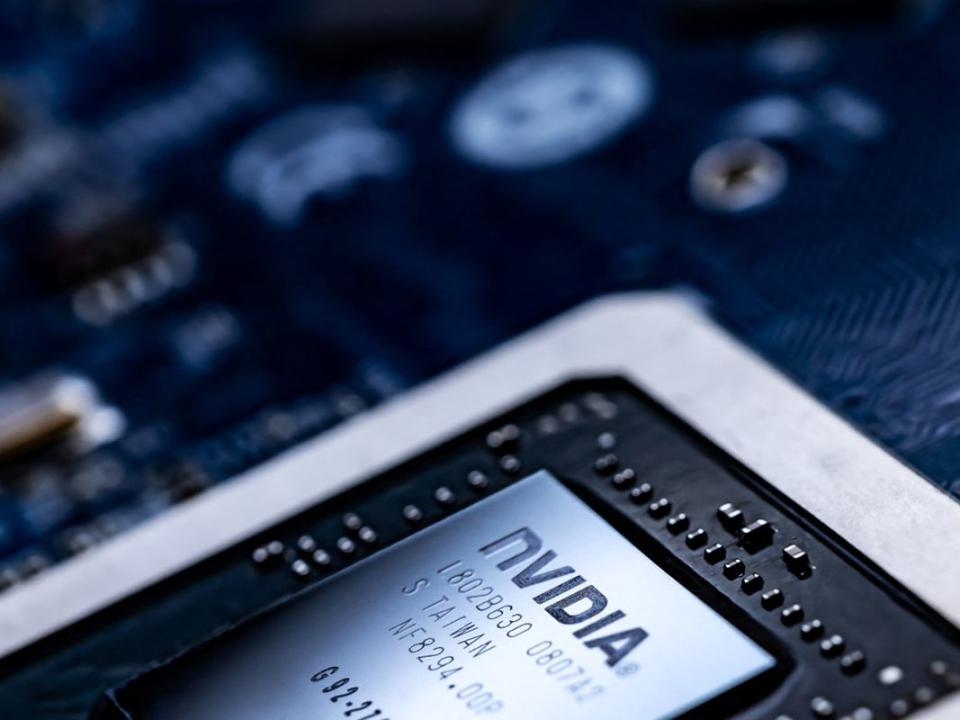AI doesn't feel pain, but investors do so your mission should be to protect yourself

One of my favourite all-time sci-fi movies is The Terminator, in which the artificial-general-super-intelligence Skynet system takes over the world by turning against its creator — humanity.
I like it for the same reasons as I do The Matrix, given they both have deeply rooted philosophical questions about creation, the nature of reality itself and our struggle to manage the conflict between our internal self and the external world.
Fast forward to today, and artificial intelligence is now a real thing and growing exponentially. There are going to be all kinds of societal implications, both good and bad, and the anxiety that comes with the uncertainty of what lies ahead.
Then there are the profound market implications that we’re already starting to witness. For example, like Cyberdyne Systems, Skynet’s world-conquering creator, we have Nvidia Corp., which is taking the investment world by storm.
Nvidia’s market cap is now larger than the gross domestic product (GDP) of every country in the world except seven, according to a Kobeissi Letter post on X, formerly known as Twitter. It’s the same size as the combined GDP of Spain and Saudi Arabia, the combined GDP of every U.S. state except California and Texas, and Russia’s entire GDP plus US$300 billion in cash.
Its market cap is also four times the market cap of Tesla Inc., seven times that of Costco Wholesale Corp., the entire market cap of Walmart Inc. and Amazon.com Inc. combined, nine times bigger than competitor Advanced Micro Devices Inc., 17 times Goldman Sachs Group Inc. and larger than the entire German stock market.
Therefore, it is no doubt having an outsized influence on the broader United States equity market, especially for passive investors. Nvidia is now the third-largest company in the S&P 500, comprising more than 5.25 per cent of the index, but add in Microsoft Corp., Apple Inc., Alphabet Inc. and Meta Platforms Inc. and these five megacap tech companies account for a whopping 27 per cent of the index — a level not seen since the dot-com bubble in 1999.
In the meantime, I see many very smart and well-respected pundits posting these wonderful 100-year log charts of the S&P 500 and how you can make a lot of money by simply staying invested, so there is little need to worry about concentration risks.
That said, what most are missing is the risk of getting the timing wrong on the entry point or, worse, reacting to the extreme market volatility that comes with passively owning the market.
For example, take a look at what happened if you bought into the internet-economy hype back in 1999 and did so via the S&P 500. Over the next decade, you made a paltry annualized 1.7 per cent return, but experienced a 51 per cent drawdown. The best annual return was 31 per cent and the worst annual return was 37 per cent.
Assuming you had the fortitude to weather such tremendous volatility and held on for another decade, your annual return would have improved to seven per cent.
Now, let’s say you invested in Cisco Systems Inc., the go-to company to own in the tech sector, in 1999. For the next decade, you made an annualized return of 0.3 per cent with a whopping 86 per cent drawdown and 41 per cent annualized standard deviation. However, if you held for another decade, the annual return would have been boosted to an annualized 15 per cent.
The big question is: How many of you out there have a 20-year-plus investment horizon and how would you feel about experiencing a Skynet nuclear bomb hitting your portfolio with a 50 per cent drawdown on your entire life’s savings?
I am not saying this is going to happen, but it certainly isn’t a non-zero event based on history. Therefore, it might be prudent to exercise some caution and not get mesmerized by those long-dated S&P 500 charts everyone is showing, especially for those in their 50s or older, just in case you get the timing wrong.
For those already fully invested, maybe take some profits and reinvest them in some alternative strategies or at least put in some low-cost insurance to protect the gains already made. This could include buffered equity strategies and structured notes that we have found very effective in our goals-based investing approach.
Short-term gains can leave you open to the hawks circling above
Here's why investors should add protection to their portfolios
Or perhaps it’s helpful to listen to Kyle Reese, who famously said in The Terminator: “Cyborgs don’t feel pain. I do.”
Martin Pelletier, CFA, is a senior portfolio manager at Wellington-Altus Private Counsel Inc., operating as TriVest Wealth Counsel, a private client and institutional investment firm specializing in discretionary risk-managed portfolios, investment audit/oversight and advanced tax, estate and wealth planning. The opinions expressed are not necessarily those of Wellington-Altus.
_____________________________________________________________
If you like this story, sign up for the FP Investor Newsletter.
_____________________________________________________________
Bookmark our website and support our journalism: Don’t miss the business news you need to know — add financialpost.com to your bookmarks and sign up for our newsletters here.

 Yahoo Finance
Yahoo Finance